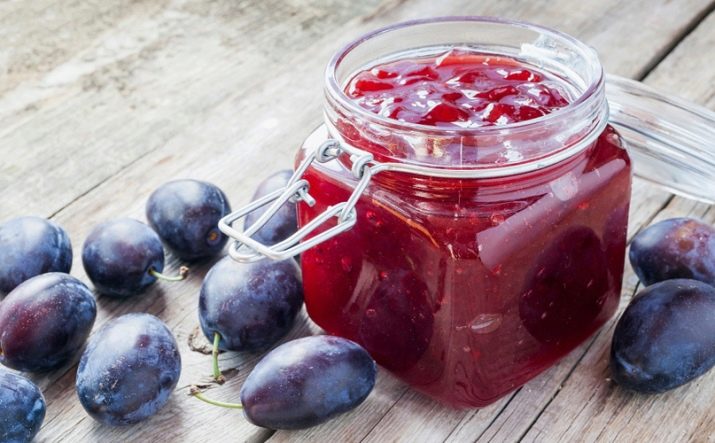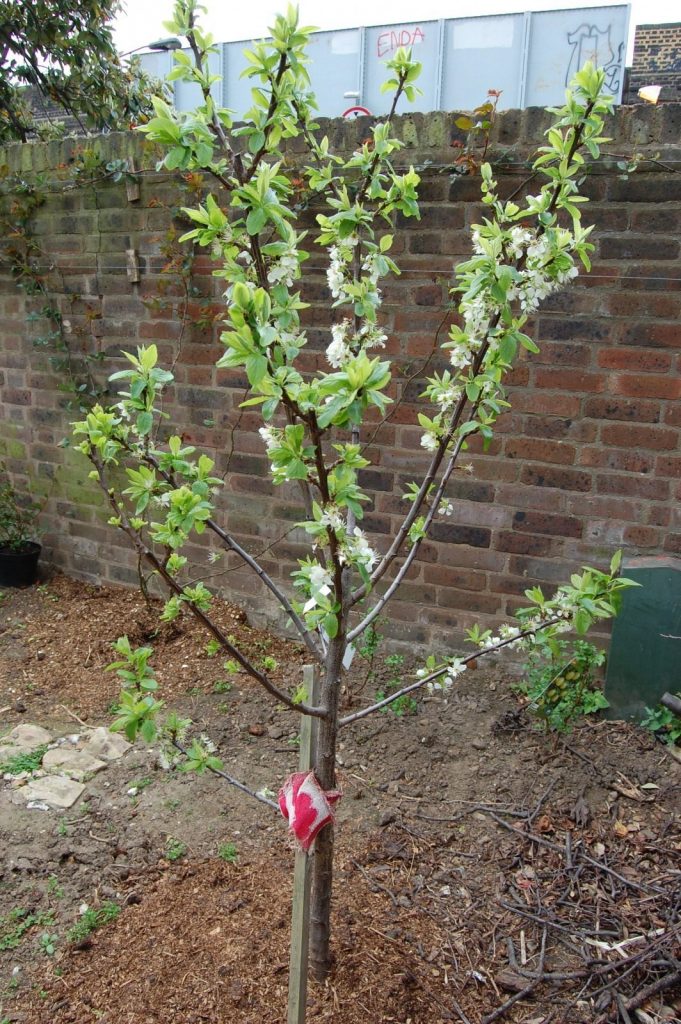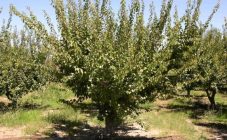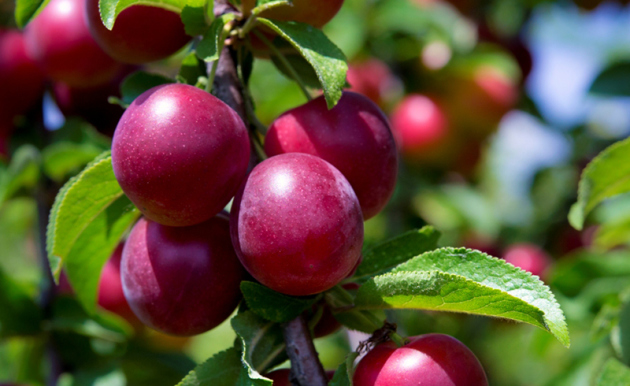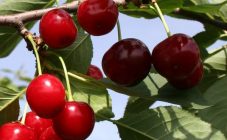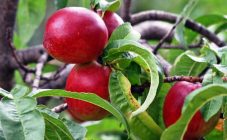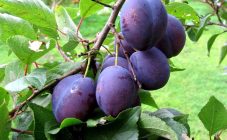The modern world markets for fruit trees and shrubs offer buyers a huge list of new and traditional varieties of fruit crops, which are constantly updated with new varieties and their hybrids. Fruit plants hybrids are obtained by crossing the usual fruit and berry species. For example, fragrant and tasty yoshta is obtained by crossing gooseberries and black currants, and raspberries and blackberries are the "progenitors" of yoshta. The range of new products includes a plum crossed with an apricot, known as abrisiva.
Description of the outline
This hybrid is a selection product of a cross of well-known fruit crops, consisting of 25% plum and 75% apricot. This extraordinary and interesting type of fruit trees can be roughly divided into the following subspecies:
- Pluot. The variety with a predominance of up to 75% of the plum character, only 25% includes apricot characters.
- Plumkot. In this hybrid, an apricot and a hybrid plum are crossed.
- Aprium. This is an apricot crossed with a plum, a hybrid variety with a predominance of up to 75% of apricot features and only 25% containing the properties of a plum.
Regardless of the name, all varieties of abrisia have one important property in common - these trees are characterized by high frost resistance.
Amateur gardeners who already have experience in growing a hybrid of plum and apricot, note the good wintering of the hybrid, even in severe frosts, up to 30 degrees. The only drawback is that during the wintering period, the fruit breed does not tolerate sudden thaws.
The apricot plum hybrid has the following description:
- The height of the tree is up to 2.5 meters. The appearance of the leaves and crown corresponds to the biological qualities of their “progenitors”. So, Pluot looks more like a plum, while Aprium looks like an apricot tree.
- A drooping crown, similar to a weeping willow.
- Flowering begins in April.
- Fruiting occurs within two or three years from the start of planting. At first, a small number of fruits ripen on the trees, but over time, the yielding activity increases. The ripeness phase begins in late July or early August.
- Fruits are oval in shape, reaching a weight of 30 to 70 grams.
- The color of the skin is directly related to the varietal characteristics of the breed and can be greenish-pink, yellow and purple. The skin of the fruit is covered with a slight waxy coating.
- The skin of the fruit is smooth, without the velvety coating characteristic of apricot.
- The stone is similar in appearance to the apricot stone. The Plumkot variety is characterized by a poor separation of the bone from the pulp, while in the abroslivaya Aprium, on the contrary, it separates well.
- The pulp is fibrous, firm and very juicy. The color depends on the "native" varietal characteristics of the hybrid.
- The appearance of the fruit is similar to that of a plum.
- Taste. The abrosive fruit has an apricot flavor with a faint orange aftertaste. Sometimes, for various reasons, gardeners have to pick unripe fruits, they ripen well at home.
In the first years after planting, young seedlings need full and proper care. If you follow all the rules for growing a hybrid, you can achieve high yields and get up to 50 kg of delicious fruits from one tree.
Fruits are eaten fresh, processed into preserves, jams, compotes and used for home winemaking. Fruit juice is especially tasty from these fruits.
Sharafuga - a hybrid of plum, apricot and peach
A hybrid of plum and apricot among amateur gardeners, known as a sharafuga, is a small, single-stemmed tree with a spreading crown and medium density. Every year there is an increase in new shoots from 50 to 70 cm.
Technical characteristics of the plum hybrid:
- Leaves. The leaf cover is similar to plum leaves. The branches have thorns like a plum tree.
- Frost resistance. Despite the fact that apricot plum is a fruit crop of southern origin, the hybrid is endowed with a high degree of frost resistance and is able to withstand short-term seasonal temperature drops.
- Harvest. Fruiting begins in late summer and ends in September. The fruits are firmly attached to the stalks, the crop does not crumble. Trees begin to bear fruit in the third or fourth year after planting.
- Fruit. The diameter of ripe fruits is from 6 to 7 cm and in appearance is very similar to the fruit of an ordinary large plum. From the apricot, the hybrid inherited the shape and size of the fruit. The color range is warm, sunny tones: from yellow-orange to purple.
- Taste qualities. The fruits have an interesting flavor mix of sweet apricot with a pleasant sourness of plum. The juicy pulp easily separates from the round stone with a characteristic peach pattern. Since the sharafuga is a hybrid with plum and apricot flavor, the taste of the fruit will be the same as that of its “creators”. As the fruits ripen, the palatability changes: the unripe ones have a plum taste, and the fully ripe ones are very reminiscent of a sweet and tasty apricot.
- Application. Ripe fruits are used to make jams, jam is made from them, and homemade canned preparations are prepared. The harvest can be stored in special fruit storage facilities.
In the spring, as a preventive measure, you can perform the traditional whitewashing of the trunk and skeletal trees, which will comprehensively protect the plum of the sharafuga from harmful insects, winter icing and hot sun rays from hitting the trunk.
Features of growing and caring for a hybrid plum crop:
- A place for planting seedlings should be selected on an even or slightly elevated place of a plot with good sunlight and protected from drafts.
- The soil should be lightweight with good air permeability and free from excess stagnant moisture.
- Saplings of a mixture of peach and plum are planted in a pre-prepared planting hole, measuring 80 x 80 x 80 cm. The bottom of the hole is filled with a drainage layer of fine gravel or broken brick. In the middle of the hole, a wooden support is inserted - a peg, to which a tree should be tied.
- Before planting, the soil is deeply dug up and enriched with several buckets of organic fertilizer with the addition of superphosphate in the amount of 70 g and 35 g of potassium fertilizer.
- Acidic soils are not suitable for hybrids made from a mixture of peach and plum. If the soil on the site has a high acidity content, you can neutralize it by adding 0.5 kg of lime per 1 m² of soil.
- Planting of seedlings in the southern regions is carried out in the autumn, and for the middle lane the best planting time comes in the spring.
The seedlings of the hybrid plum are watered in the same way as the plum: using a sprayer or directly into pre-made grooves, 10-15 cm deep, located at a distance of 50 cm from the tree trunk. Watering is carried out as needed, in the hot season the amount of irrigated water is increased.
Like any fruit tree, a mixture of peach and plum must be fed with dressings that stimulate the growth and fruiting of the culture:
- Spring feeding is applied after the snow melts.To do this, pour 3 tbsp into the ground of the trunk circle. spoons of urea per 1 m² of land.
- Autumn feeding is carried out with the following composition: superphosphate is added to 2-3 buckets of humus - 5 tbsp. spoons, potassium sulfate - 2 tbsp. spoons. This estimated amount of top dressing is applied per 1 m² of the trunk circle.
Other plum hybrids
In addition to the above hybrids, many amateur gardeners are showing interest in other hybrid crops that emerged from crossing the plum and other stone fruits:
- Peach plum. This plum, crossed with a peach, has large, red-sided, honey-colored fruits. Fruit taste is sweet and sour with soft and juicy pulp. The cultivation of peach plums has its own characteristics. The fact is that this hybrid is sterile, therefore, for pollination, it is necessary to plant pollinating trees nearby. For this reason, next to the hybrid, plum varieties Vengerka, Mirabel Nancy, Renclode are planted. The peach plum begins to bear fruit six years after planting. A full and regular crop can be harvested from a tree that has reached the age of 15 years.
- Plum crossed with cherry plum. In the markets of fruit trees, you can find seedlings with the intriguing exotic name "Black Apricot". This hybrid crosses apricot and cherry plum, known as a small variety of plum. A successful combination of positive "parental" qualities, such as delicious juicy "apricot" fruits with the consistency of cherry plum with a pleasant sourness, brought this variety to the first places in the rating of hybrid stone fruit crops. The variety bears fruit regularly even in the most unfavorable growing conditions.
- A hybrid of apple and plum. Although breeding technologies are constantly evolving, no hybrid of apple and plum has been created to date. Often, under this name, customers are offered apple nectarine, which is a peach and apple derivative.
As can be seen from the review of hybrid fruit breeds, it is with the plum that other stone fruit breeds can be crossed. As a result of such selection, interesting hybrid varieties with tasty fruits of an attractive appearance appear.
